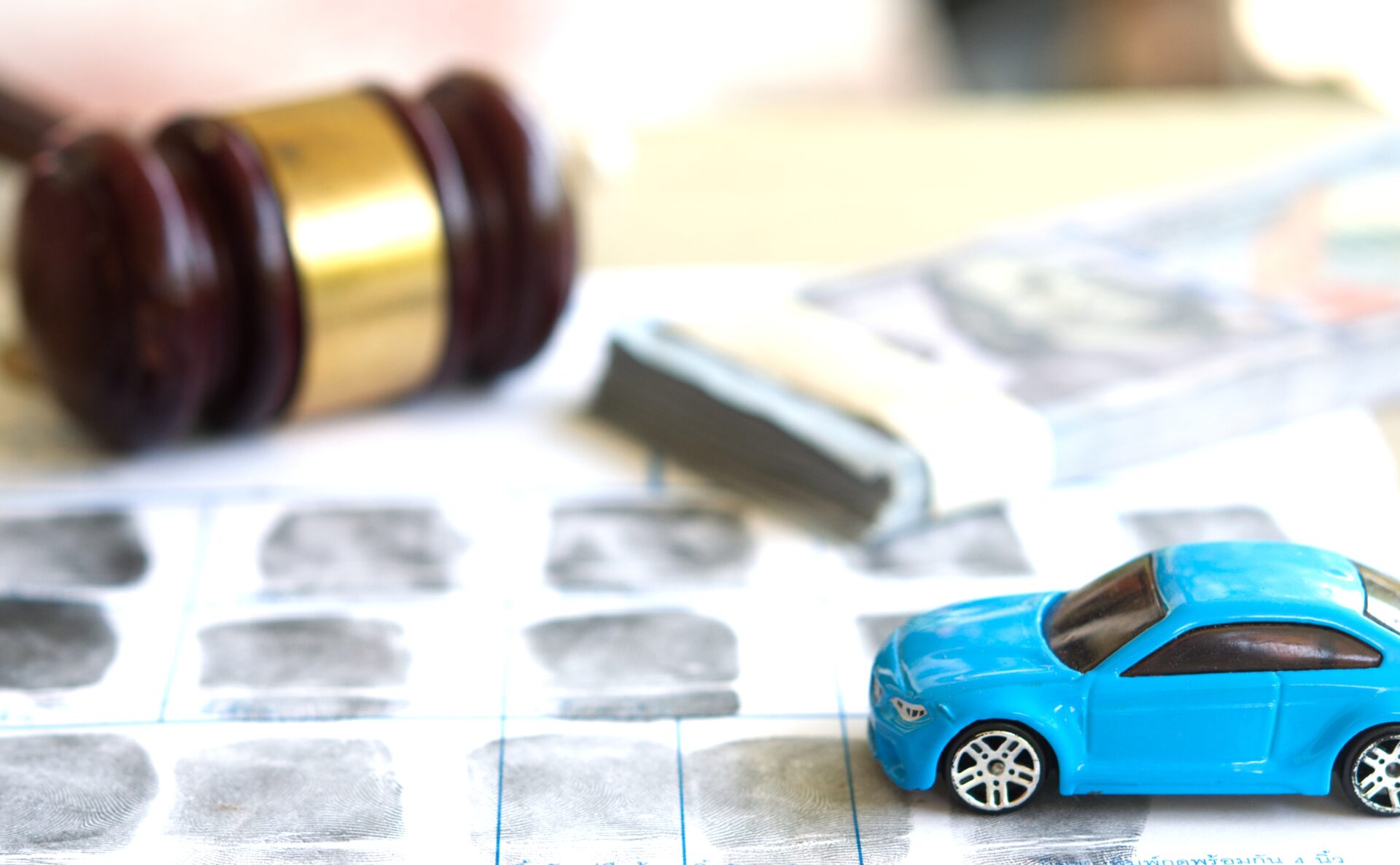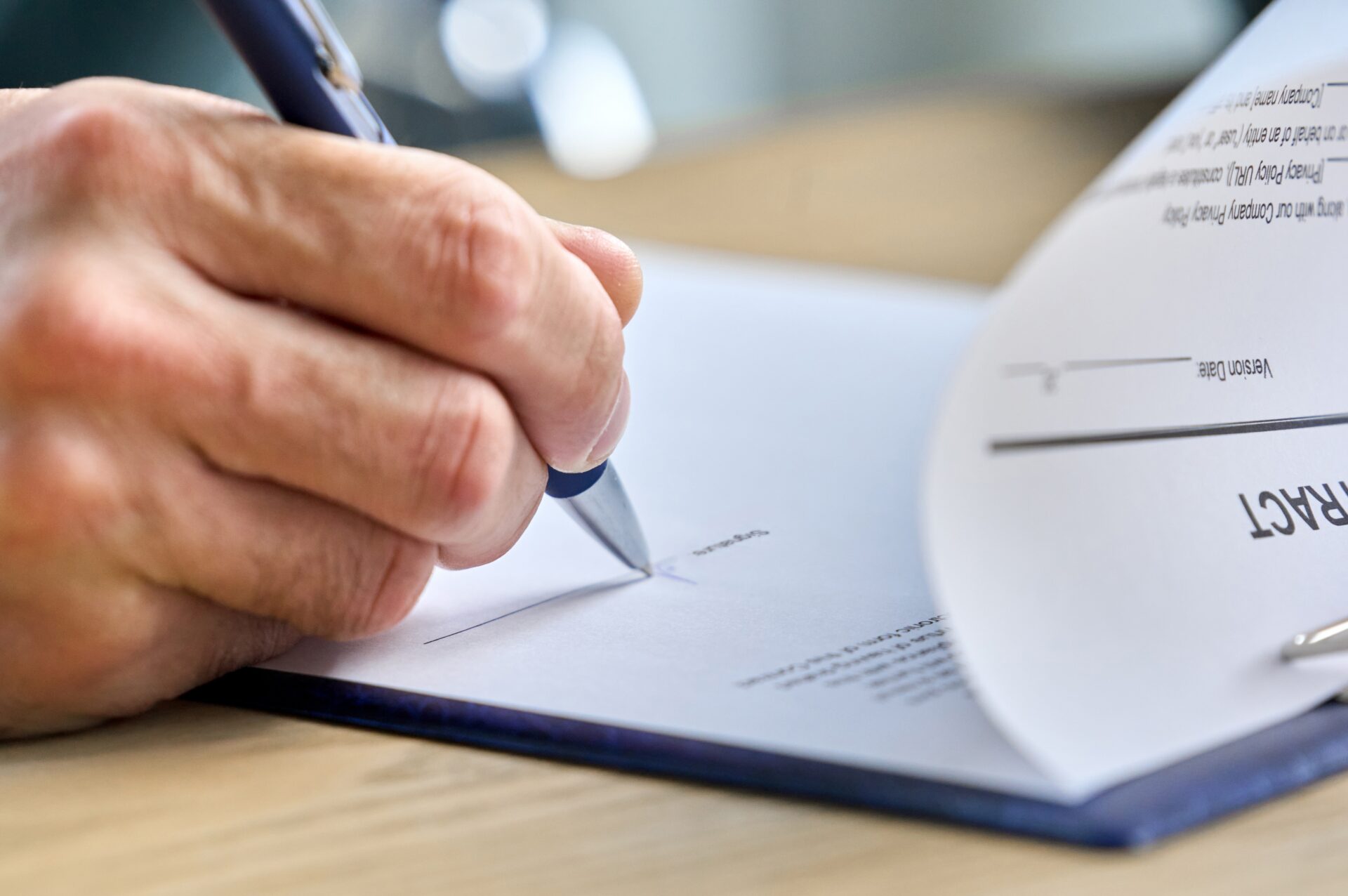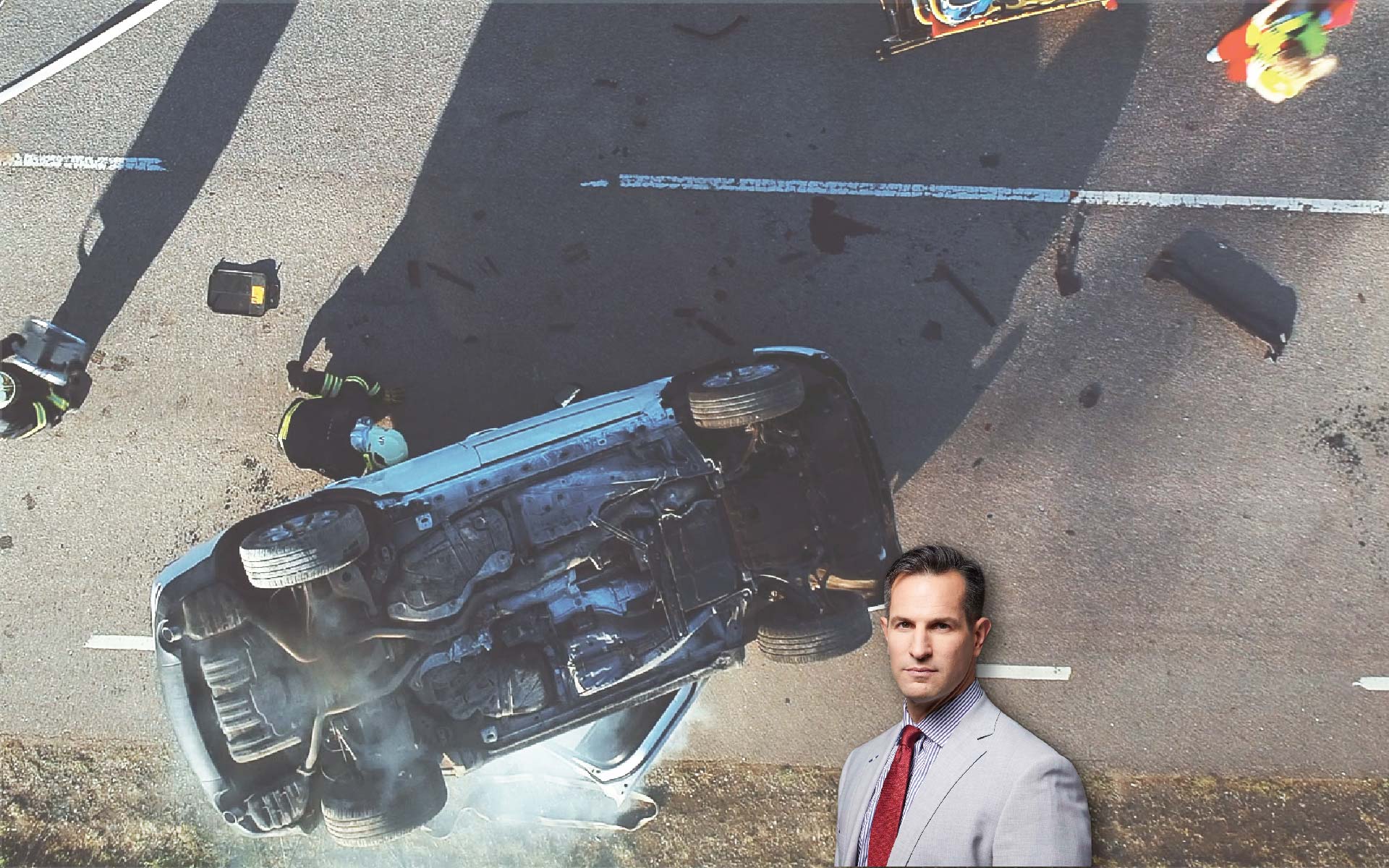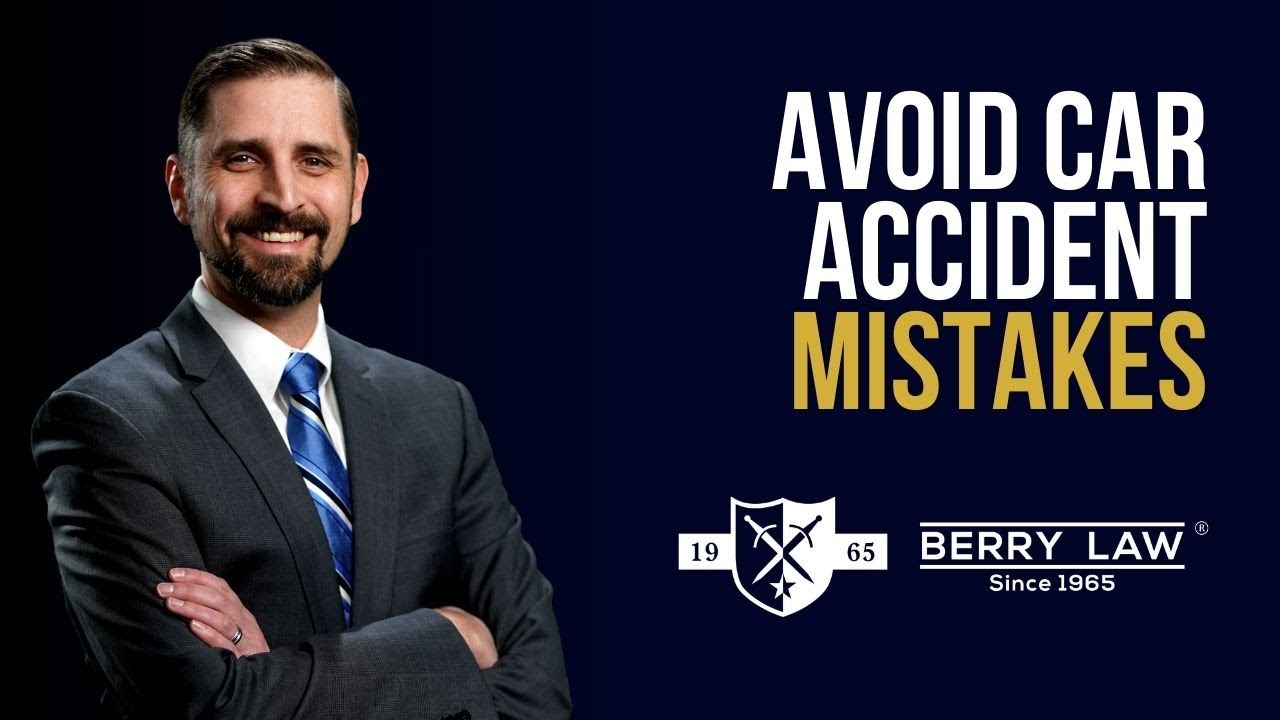 Understanding who hit who in a car accident doesn’t just help determine liability. It can also impact insurance rates and the ability to receive compensation for damages.
Understanding who hit who in a car accident doesn’t just help determine liability. It can also impact insurance rates and the ability to receive compensation for damages.
Unfortunately, what may initially seem like a straightforward answer can quickly become complicated due to multiple vehicles, unclear circumstances, and conflicting accounts.
At Berry Law, we’ve seen what happens when drivers assume who hit who in a car accident.
Our goal with this learning resource is to help injured parties understand the complexity of determining fault and how to navigate this process confidently with the help of a Nebraska car accident lawyer.
Who Is At Fault For A Car Accident?
Based on traffic laws and common sense, it may initially seem obvious who is at fault for a car accident. However, this is not always the case.
Determining fault can be subjective and may require a thorough investigation of the accident’s circumstances. Factors that can contribute to determining fault include:
- Traffic laws: Each state has its own rules that dictate how drivers should behave on the road. These laws outline right-of-way, speed limits, and proper turning procedures. If one driver violates these laws, it can significantly impact their level of fault regardless of who hit whom in a car accident.
- Evidence: Physical evidence, such as tire marks, photos of the damage, and witness statements, can also be crucial in determining fault. This is why it is important to gather as much evidence as possible at the accident scene.
- Negligence: Even when traffic laws are followed, a driver may still be deemed at fault if they act negligently.
This list highlights the fact that determining fault in a car accident is not always straightforward. It requires careful consideration of various factors and evidence to accurately determine who hit who in a car accident.
What Damage Happens In A Car Accident?
The location of damage to each vehicle is critical in determining who hit who in a car accident.
For example, if one vehicle has damage to the front end and the other has damage to the rear end, the rear driver was likely at fault for hitting the other vehicle from behind.
However, this isn’t always the case as there can be multiple impacts or factors that contribute to the type and extent of damage. For example, in accidents involving multiple vehicles, determining who hit who can become complicated. Each vehicle may have different types of damage, and multiple drivers may try to claim that they were not the cause of the initial impact.
This is just one example of how accident damage can occur in unexpected ways. This is why it is critical not to make assumptions or statements of fault without consulting a car accident lawyer first.
Are Car Accidents Always The Fault of One Party?
No, car accidents are not always the fault of one party. Sometimes, both parties may share a level of fault depending on their actions leading up to the accident. This is often referred to as modified comparative negligence.
For example, suppose one driver was speeding and the other made a left turn in front of them. In that case, both drivers may be found partially at fault for the accident. This can impact how much compensation each driver can receive for damages, and even whether the drivers may be allowed to recover damages at all.
In the case of rear-end collisions, sideswipes or, T-bone collisions, it may be more clear who hit who in a car accident. However, both drivers could still hold some percentage of fault.
Ultimately, no matter the type of car accident or damages involved, it’s essential to avoid making assumptions and consult a car accident lawyer for guidance on determining fault. Only then can injured parties accurately understand who hit whom in a car accident and take the necessary steps toward receiving proper compensation for damages.
Berry Law’s Team Provides You With Multiple Attorney Perspectives
How Do I Prove Who Hit Who In A Car Accident?
Depending on the collision’s severity, a thorough investigation may be the only way to accurately determine who hit who in a car accident. In these cases, gathering as much evidence as possible at the accident scene and consulting with a personal injury law firm is vital.
Some ways to prove who hit who in a car accident include:
- Photos: Taking photos of the damage and the scene, if safe, can help paint a clearer picture of what happened at the scene.
- Witness statements:
 Eyewitness accounts can also provide valuable information about how an accident occurred. Be sure to exchange contact information with witnesses and have a lawyer follow up with them for statements.
Eyewitness accounts can also provide valuable information about how an accident occurred. Be sure to exchange contact information with witnesses and have a lawyer follow up with them for statements. - Police reports: If police were called to the scene, their report could also provide important details about the accident and help determine who hit whom.
- Expert analysis: In some cases, expert analysis may be needed to reconstruct the accident and determine fault. This can include things like accident reconstructionists or experts in vehicle dynamics.
Unfortunately, car accident injuries can keep those harmed from being able to gather this information at the accident scene. Working with an experienced car accident lawyer can make all the difference in proving who hit who in a car accident.
Can I File A Personal Injury Claim If I Was Partially At Fault For the Car Accident?
It is possible to file a claim or lawsuit if you are found to be partially at fault for the accident. However, compensation may be reduced according to the percentage of fault assigned.
For example, in Nebraska, if a driver is found to be 50% or more at fault for an accident, they are not eligible to receive compensation from the other party’s insurance.
However, if a driver is found to be less than 50% at fault, they can still pursue a claim, and their percentage of fault will reduce their recoverable damages proportionately.
In Iowa, the compensation rules are slightly different. Drivers can still receive compensation if they are found to be no more than 50% fault. However, their percentage of fault will still reduce their total compensation.
How Can A Car Accident Attorney Help Prove Fault in a Car Accident?
A car accident attorney can be instrumental in proving fault in a car accident by:
- Conducting a thorough investigation: Attorneys have experience gathering evidence, interviewing witnesses, and working with experts to reconstruct the accident.
- Examining police reports and other official documents: Attorneys know how to obtain and analyze these documents for any discrepancies or important details that may have been overlooked.
- Negotiating with insurance companies: Insurance companies often try to shift blame onto the injured party or downplay their injuries. An experienced attorney knows how to negotiate with insurance companies and advocate for their client’s rights.
- Representing clients in court: If a car accident case goes to trial, an experienced attorney can present evidence and arguments to prove fault and ensure their client receives proper compensation.
Working with a car accident attorney can significantly improve the chances of proving fault in a car accident and receiving maximum compensation for damages.
Their knowledge and experience in handling these cases can help navigate the complexities of determining who hit who in a car accident and holding the responsible party accountable.
How Long Does It Take To Determine Fault in a Car Accident?
The time it takes to determine fault in a car accident can vary depending on the case’s complexity.
Sometimes, the fault may be clear from the evidence collected at the scene, and an insurance settlement can be reached relatively quickly.
However, if there are disputes or discrepancies in the evidence, it may take longer to determine fault.
Hiring experienced legal representation to handle a car accident case can help expedite the process of determining fault and reaching an appropriate car accident settlement. Attorneys can also advise clients on any time limitations for filing a claim to ensure they receive proper compensation in a timely manner.
Who Pays For Damages In A Car Accident?

The at-fault driver’s insurance company is typically responsible for paying for damages in a car accident.
However, if an at-fault driver does not have insurance or their policy does not cover all the damages, they may be personally responsible for covering the remaining costs. However, many negligent drivers can oftentimes escape these debts through bankruptcy. So, another avenue of relief is determining whether the injured accident victim has Underinsured Motorist Coverage or Uninsured Motorist Coverage available on their own auto policy, and asserting a claim for that payment also.
These claims can be pursued through settlement, or if that is unsuccessful, then through a personal injury lawsuit, where injured parties can seek compensation for medical expenses, lost wages, and other non-economic damages.
Personal injury lawsuits are complicated. To ensure a favorable outcome, it is wise to consult a car accident attorney for advice on pursuing this course of action.
Who Hit Who In A Car Accident FAQ
Am I always at fault if I rear-end another vehicle?
Not necessarily. While rear-end collisions are often attributed to the driver in the back, the front driver, or even another driver may bear some or even all of the liability in some circumstances. For example, if the front driver suddenly and unexpectedly stops without a valid reason or their brake lights are not functioning correctly, they may share some liability.
What if I hit a car that made an illegal maneuver?
If it was impossible to avoid hitting a car that made an illegal maneuver, such as running a red light or making an illegal turn, the other driver may be found entirely at fault for the accident. However, gathering evidence and consulting with a personal injury law firm is vital to ensure proper fault is assigned.
What if I was hit by a driver who was under the influence?
Drivers who are under the influence of drugs or alcohol and cause an accident will likely be found at fault for the accident, no matter who hit who.
I was hit due to poor road conditions. Who is at fault?
If poor road conditions result from negligent road maintenance, the agency or entity responsible for upkeep may occasionally be found at fault for the accident. However, if the driver was aware of the hazardous conditions and still chose to drive recklessly, they also likely share responsibility for the accident.
Trust A Car Accident Attorney From Berry Law To Help Determine Who Hit Who In A Car Accident
Because determining fault in a car accident is complicated, it is important to have experienced legal representation.
At Berry Law, our team of experienced personal injury lawyers has extensive experience handling car accident cases and can help gather evidence, navigate insurance negotiations, and litigate in court if necessary.
Avoid the stress of trying to determine fault alone. Contact us for a free case evaluation to understand how to protect your right to compensation regardless of who hit who in a car accident.



